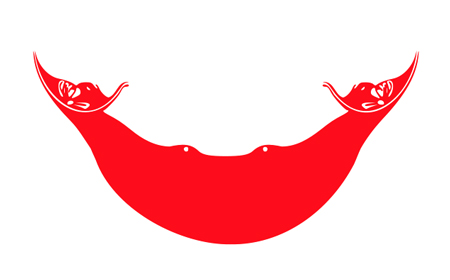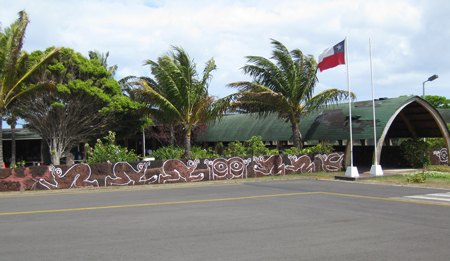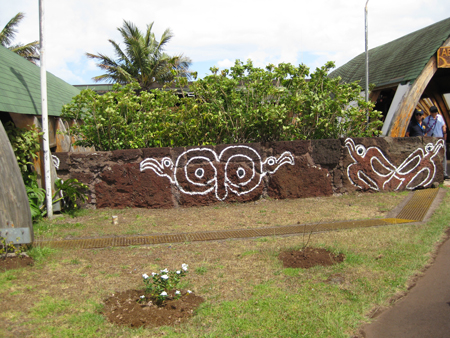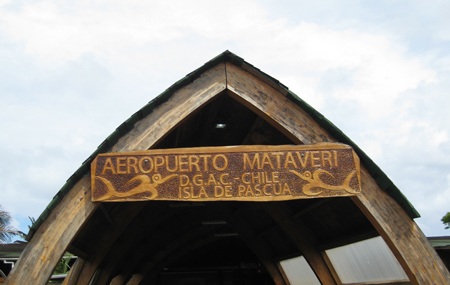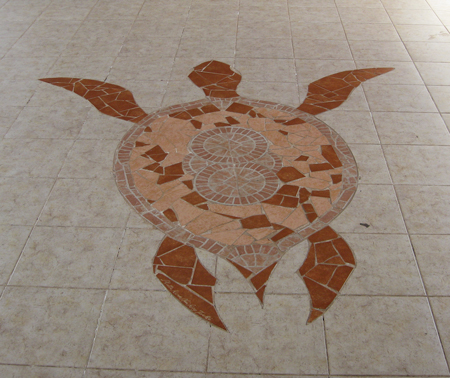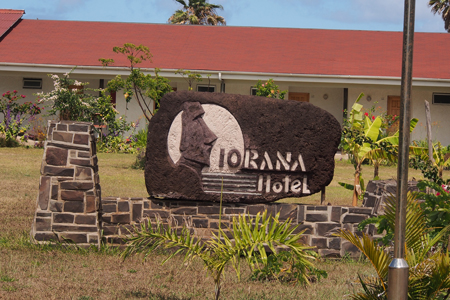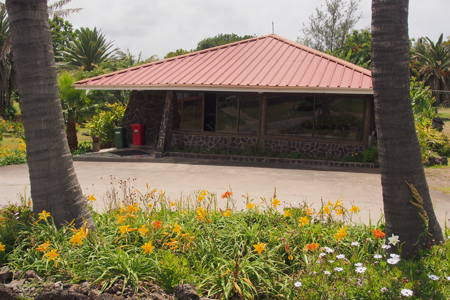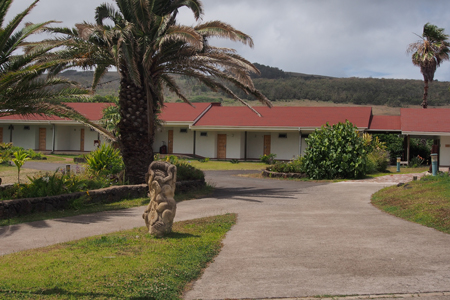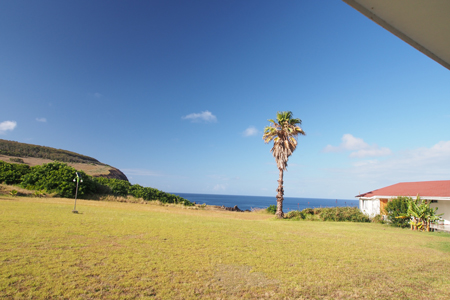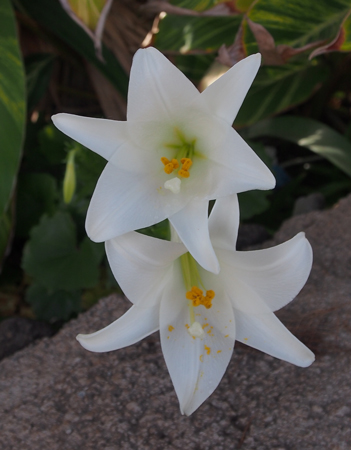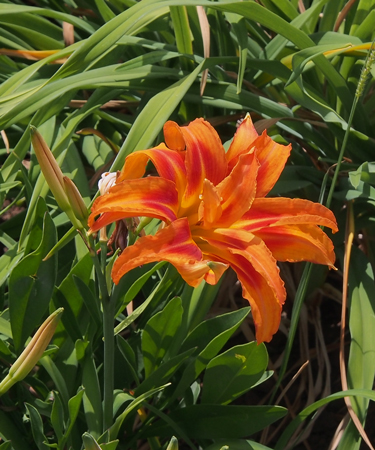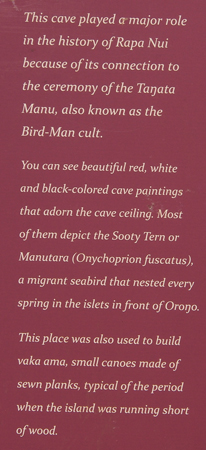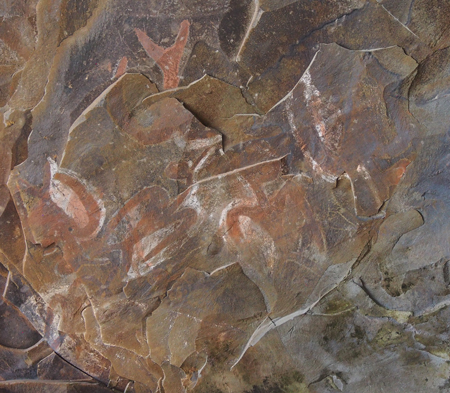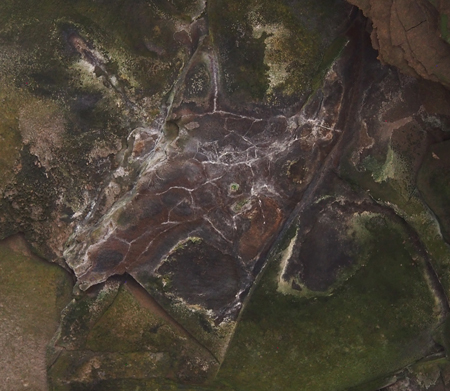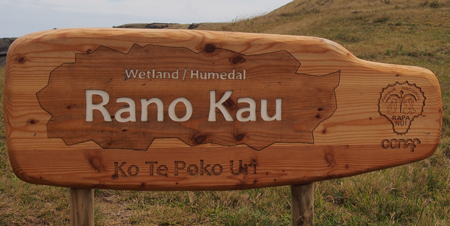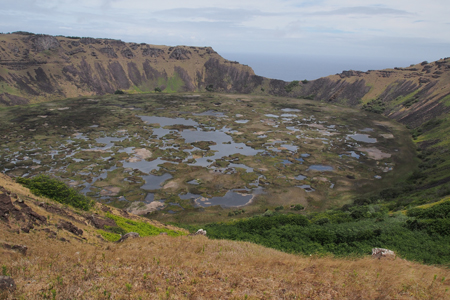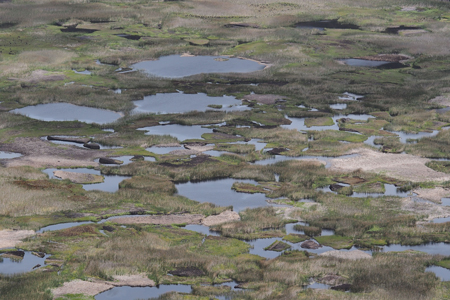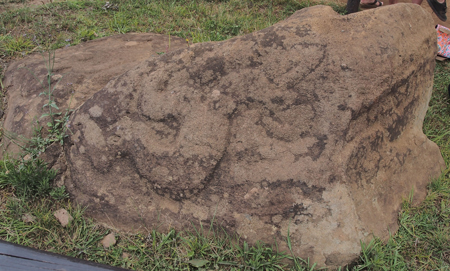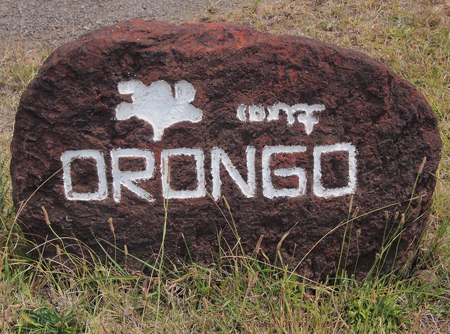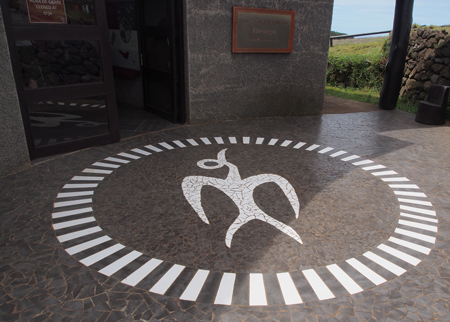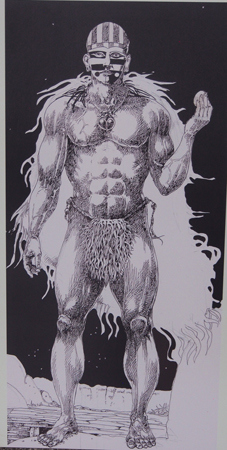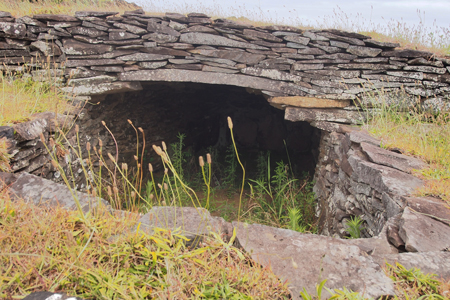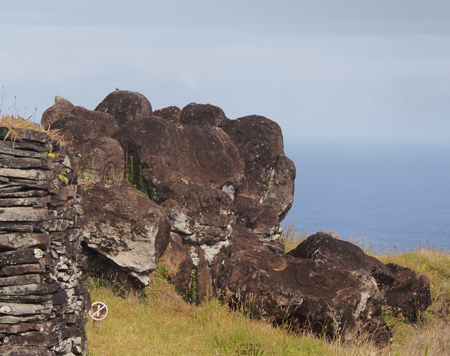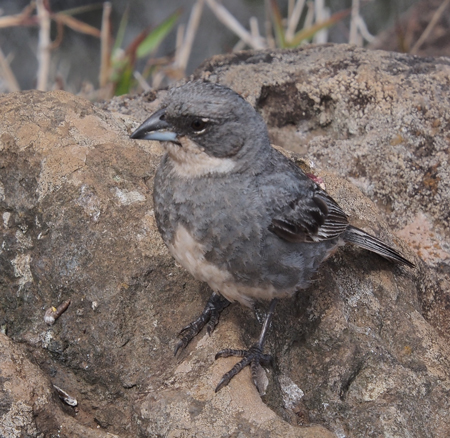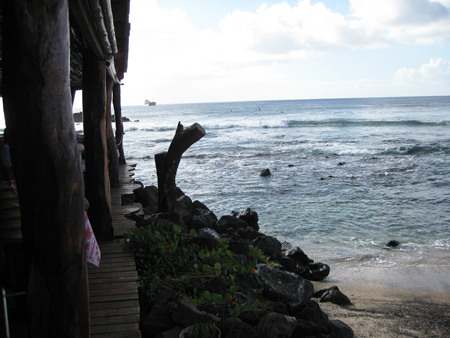Mon., 12/22/14 – Santiago to Easter Island (Rapa Nui)
We got up at 5 AM and put our luggage out for the bellboys at 5:45. Since it was too early for the hotel breakfast buffet, they put out coffee, OJ, baloney and cheese sandwiches, cookies, and yogurt just for us to eat in the bar at 5:45. It tided us over until we got a breakfast omelet, fruit, and roll on the plane.
At 6:30 we got on our large and very nice motor coach for the 30-minute ride to the airport. Check in was easy and the plane was on time, leaving at 8:30. We again had bulkhead seats with lots of legroom and individual TV screens for movies, games, etc. The flight to Easter Island takes five and a half hours (2,340miles from Santiago).
Easter Island or Rapa Nui, its native name, is a “speck in the ocean” far away from everything. The nearest inhabited island is 1,289 miles away (Pitcairn Island). The native language is called Pascuan, an Eastern Polynesian language. The island is a special territory of Chile and had a population of 5,800 residents at the 2012 census.
Flag of Easter Island - a white flag charged with a red reimiro. The reimiro is a wooden pectoral ornament once worn by the women of Rapa Nui.
The airstrip on Easter Island was built by the US Air Force after WWII, to keep an eye on what was happening in the Pacific. The strip runs from ocean to ocean and you don’t want to touch down too early or too late!
Our little bus took the 16 of us around the town of Hanga Roa and then on to our hotel, the Iorana. We are outside of town – a 25-minute walk – and we overlook the ocean. It is a beautiful setting. We ate lunch at the hotel - $22 US for two sandwiches, fries, and one beer. Since everything must be flown in to the island, I guess this was a reasonable price.
Painted wall at the airport
Painted wall at the airport
Airport terminal
Floor mosaic at the terminal
Hotel entrance
Hotel sign
Hotel lobby
Our rooms
View from our room
Sculptures on the hotel grounds
Easter lily
Double blossom day lily
After lunch we got on our little bus with Polo, our local guide, and Berenice to begin our tour of the island and many of the Moai (pronounced Mow-I, singular and plural are the same). Our first stop was 100 yards from our hotel at Ana Kai Tangata, one of the many caves that the original inhabitants used for sleeping. These caves were either formed by the ocean crashing on the coastal rock or made from openings in lava tubes. This cave had a red and white drawings of a Duick bird on the ceiling .
Cave paintings
Cave paintings
Cove below the cave
We then went to the Rano Kau Volcano crater and walked up the side to look down into it. It is filled with black water (rain water over lava rock) and reeds that had many uses for the early occupants.
Rano Kau crater
Rano Kau crater
Rano Kau crater
Carved rock
The ceremonial city of Orongo was on the side of the crater. It started to rain as we toured the stone ruins of the city. There were stone “houses” for the noble class.
Every September the tribes gathered here for the Birdman (Tangata Manu) Competition. The leader (chief) of each tribe selected their best warrior to compete. He had to scale down the treacherous ocean side of the crater and then swim out to the ceremonial islet (Motu Nui) using a floatation device of reeds. He carried food for several weeks to sit on the rock in the ocean waiting for the Manutara birds (Sooty Terns) to arrive and nest and lay the first egg. The warrior was to carry the first egg in a headband back across the water and up the crater cliff to present the egg to his chief. The first egg brought back signified the winner who was then treated as a hero and his tribe was the celebrated one.This was an interesting introduction to the ancient culture of Easter Island and to the sunny, rainy, sunny days here on this speck of an island. At times one may think they are in Hawaii until we look around and realize the forests are all gone and the coconut and banana palms are recent plantings and the volcanic hillsides are bare.
Mosaic at the entrance to the museum
Drawing of a birdman
Houses
House
Birdman Islands
Rock carvings at Orongo
Bird
The view from the Orongo site allowed us to look down on our hotel and the airstrip.
Iorana Hotel from above
Airstrip runway
Airstrip runway and terminal
After a short rest at our hotel/lodge we walked into town to browse and shop (and then met Berenice and most of our group at La Kaleta restaurant near the docks for a nice dinner ($65 US) - grilled fish of the day, chicken for Gale, and two beers and one bottle of water. We ate on the veranda and watched surfers and a few boats. It was very relaxing and pleasant. We walked back through town (36 minutes) to our lodge.
Surf and surfers from the restaurant
Restaurant kitchen
| Return to Top | Return to Itinerary | Return to Trips page to view other trips | Return to Dreamcatcher Home Page |

